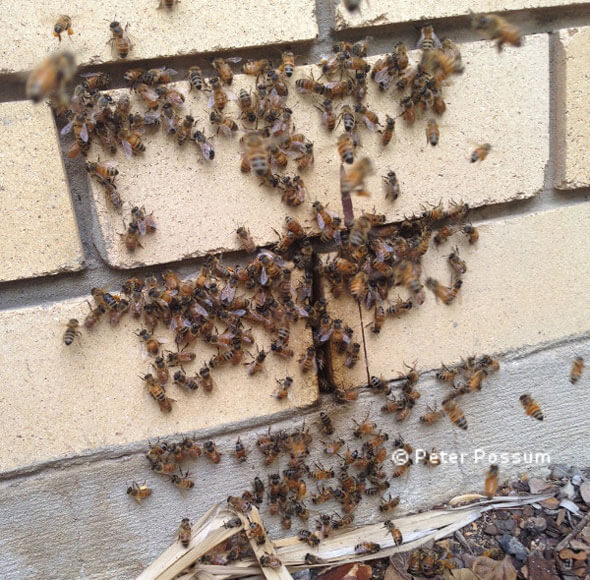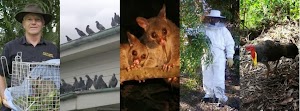Each hive has one queen who supplies all the eggs that are fed by the workers in the hive. As the hive increases in numbers, when the conditions are right, the queen will produce some eggs that, with different special feed, develop into future queens. Unless the resident queen is near the end of her life, each of these new queens must fly away and establish their own new colonies. Each queen takes some of the workers with her to a nearby location and then waits for them to identify a suitable location for her new hive.

Individual bees, called “scouts”, will search the area for a good location and while that is happening, most of the workers remain with their queen, protecting her by forming a “ball” of living, moving individuals with the queen at the center. They can control the temperature around her and protect her. It is also the start of a process of establishing their own identity as a separate colony, with unique pheromonal cues so they know which other bees belong to their new hive.
This “bee ball” may be on the branches of a tree, on a building, or even on the roof of a car. It can sometimes be in a location that causes difficulties for people but the bees should not be disturbed as they will interpret that as an attack on their queen. Their presence is usually a short term problem. Often it is not necessary to immediately call a bee keeper or pest controller to remove them. Within a few hours, the scouts have selected a new location and the “bee ball” will break up into a thick cloud of bees as they leave the temporary stopping place and all fly to the new hole selected by the scouts.
Usually they have found an entry into a cavity within a tree or building and the new hive can build slowly and establish itself out of sight. So if this process happens as planned the “bee ball” and the cloud of bees will move on from their temporary location after a few hours. It is only when the scouts fail to find a location that the “bee ball” remains, sometimes in a highly visible location. While they will frequently move on during the early morning of the following day, if the bees are causing a problem, or don’t leave after waiting 4-6 hours, or preferably waiting overnight, call us to arrange removal of the swarm.







